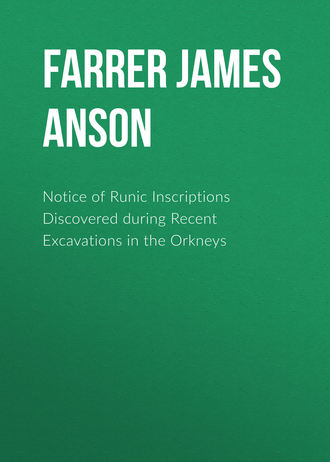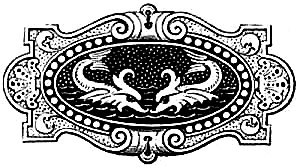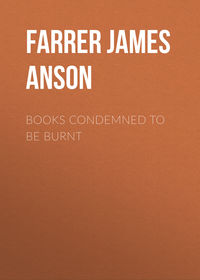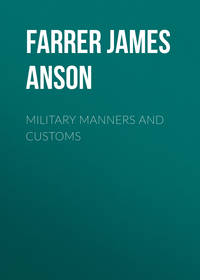
Notice of Runic Inscriptions Discovered during Recent Excavations in the Orkneys
Very few of the old Northern letters are found. The “Dragon” and “Worm Knot” are still perfectly distinct, and have evidently been carved by superior artists. With the exception of two stones – one of which is shewn in the drawing of the interior of the tumulus, and on which four letters are carved – none have been found bearing any inscription amongst the debris, nor is there any reason to suppose that stones bearing inscriptions have been removed from the walls. The two stones before alluded to had evidently been used to close up the cells, and lay on the basement floor just below the entrances to the cells from which they had been rudely torn. In one of the cells, that on the left side of the chamber, a few letters were indistinctly written. By accident they were forgotten, and no casts were taken of them. It is not easy to account for the various elevations at which the carvings were made. Those on the higher parts could not have been reached by persons standing at the bottom, but they might have been inscribed after the roof had been broken in, and when the building was in a partially ruined state. Many of the marks, possibly some of the “scratches” or “scribbles” to which no importance is attached, and perhaps even some of the doubtful letters, may be the result of violence used in breaking in the roof. Most of the Runes belong to the Norwegian division of the Scandinavian class, and have nothing to do with the Gothic or older alphabet, but, in the opinion of Professor Munch, they exhibit some archaicisms which prevent their being placed in the latest times of the Norwegian class; they must therefore be referred to about A. D. 1150.
Date of Inscriptions.
The meaning of the word Maes-Howe is very obscure. It is, as Professor Munch remarks, not easy to explain. The haugr, pronounced how, is plain enough; the word Maes might have been derived from Meitis, pronounced almost like Meiss, Meitir, gen. Meiris, which was the name of a fabulous sea king, and was afterwards used to denominate any mighty king or warrior. Meiris-haugr therefore might have been synonymous with the how, or tumulus of this fabulous sea king. This opinion of Professor Munch’s is at all events not unlikely to be correct; certainly local tradition has always ascribed a sepulchral character to the mound. Professor Rafn thinks that the word is derived from Mar,3 the name of a man, and that valuable information might be obtained if it were found possible to read with a greater degree of accuracy the Runes Nos. 6 and 7, since Orki and Mar are named in these inscriptions, and it is to be inferred that Mar Orkason had engraved some of these Runes.
Nos. 13 and 20 are justly attributed to the times of the Crusaders,4 but many of the other inscriptions must have been engraved by different persons at different times. Professor Stephens believes that most of them are of a much earlier date than the twelfth century, and this opinion is much strengthened by the worn appearance of some of the Runes, and the uncertain character of others. Some of the proper names cannot be read as certainly correct, owing to the marks and abrasures in the stones. Two of them, Orki and Oframr, are supposed to be hitherto quite unknown, and may therefore perhaps be referred to the earlier inhabitants of the How, whilst Gawkr and Trandill both belong to an historical person in Iceland. The other names are common, and known from Runic inscriptions, as well as from ancient manuscripts and documents. The name Ingibiorg, occurs several times in the Orkneyinga Saga, and was by no means an uncommon name in Orkney. Ingibiorg, the widow of earl Thorfinn (who died in 1064) afterwards married Malcolm, king of Scotland; but it cannot be safely asserted that this was the Ingibiorg mentioned in No. 8. On the whole, it seems not unreasonable to suppose that all the names found inscribed on the walls may belong to persons who lived since the construction of the barrow, and that we have as yet no certain evidence to justify us in determining either the name of the builder, or the period when the tumulus was first erected.
Most of the inscriptions are in the subjoined form of the later Runic alphabet, or the “Norwegian division of the Scandinavian Runes” as described by Professor Munch. The dots inside the B, and G, do not occur here, and the


In the earlier or “Gothic” Alphabet, many of the letters are quite different.


Readings of the Inscriptions by ProfessorsStephens, Munch, Rafn
Plate VII.
No. IThatir Vikinkr.. a, kom, Vtir, Hir, tilThatir the Viking, came here to weary – (perhaps from the sea, or from battle.)The inscription is incomplete, several letters being obliterated. The a in the Bind-rune Ak is probably the termination of the word Fra, from. – Professor Stephens.
Thatir Vikinkr.. KOMUTIRHIRTILThat which the Wicing.. came outerly here toThis is only a fragment, some of the letters being obliterated. It may mean that a pirate or Wicing had been at the tumulus and found something, or that some person had found what the Wicing had left. It may however be merely the name of some person, as Vikingr is sometimes used as a Christian name. – Professor Munch.
That Ir Vikingr.. A Kom Ut IrhirtilThis is a Viking.. come out is heretoThe inscription is incomplete. Vikingr may be the name of a man. – Professor Rafn.
No. IIMolfr Kolbainssonr Raeist Runa Thesa GhautMolf Kolbainsson carved these Runes to GautProbably a memorial to a comrade who had fallen in battle. – Professor Stephens.
Tholfr Kolbeinssonr raeist runar thesaTholf Colbanesson engraved these RunesThe last word, read as haua, seems superfluous. It is possible there may have been some mis-spelling, the first




(Note.– Nos. 1 and 2 are both engraved on the upper part of the building. – J. F.)
No. IIIBra Hoh ThanaBra hewed thisThe third letter

The inscription seems to be incomplete, some words may have been engraved on another stone and lost. – Professor Munch.
(Note.– The present state of the stone hardly justifies this supposition. – J. F.)
Bre höh Thena, bre hoh ThennaProfessor Rafn does not translate this. He remarks that what precedes is “incomplete and undecipherable.”
No. IVVemuntr Raeist Vemunt carved.– Professor StephensVemuntr Raeist Wemund engraved (these Runes).– Professor MunchVimundr Raeist Vemund carved (the Runes).– Professor RafnNo. VF, U, Th, O, R, K, H, N, I, A, S, T, B, M, L, YThis is the Scandinavian Runic Futhork, or Alphabet. The form of the second letter is very rare, the last three are also very unusual, and may be considered as an indication that the building had been for a long period of time in the hands of many people. It was the custom to write the Alphabet wherever it was most likely to meet the eye, and a passing visitor, or treasure seeker, would have hardly taken so much trouble. – Professor Stephens.
F, U, Th, O, R, K, H, N, I, A, S, T, B, U, L, UThe Runic Alphabet – Some of the letters here have been placed out of their proper order, owing probably to carelessness on the part of the writer. Time has also produced its effects upon the letters, the ǁ is clearly


The common Runic Alphabet. – Professor Rafn.
No. VIOrkasonr, Saghthi, a, Runom, thaeim, Ir, Han, RistuOrkason said, in the Runes which he wroteNo. VIINuari Kulturmr, Sikurthr, Iru, Falnir, Kiaebik, Uil Saeghian Ir, So, MairOrkason said in the Runes which he wrote – Nuari, Kulturmr Sikurthr, Iru, are fallen.Kiaebik will say ye (tell you) so moreThese two inscriptions must be taken together; they have been written at the same time, and by the same person. It is probably a military message from some battle-field, sent through a trusty officer who is commissioned to make known the details. The word Nuari is very doubtful; this part of the inscription is very indistinct. It becomes more legible advancing from left to right. – Professor Stephens.
Orkasonr sagthi a run om theim er halir ristuThe son of Orca dictated the Runes which heroes engravedThere seems to have been some blunder in the writing. If the dot on the right side of the letter



The two inscriptions are to be read together, but much of No. 7, is very indistinct. – Professor Rafn.
Plate VIII.
No. VIIIIngibiorgh, Hin, Faret, Lutin, Hir, Mighil, ofl, ateIngibiorgh, the fair lady. Many a woman hath fared skinclad (or bent) here, (who) great wealth ownedIngibiorgh probably resided here for safety, and, as the word Lutin signifies bent, it may refer to the low cells which are within the walls of the How. (Note.– The entrance also is very low and narrow.) The six Crypt Runes, or secret staves, represent the letters, A. Æ. R. L. I. K. R., and signify Aalikr or Erling, a proper name, or perhaps the beginning of some sentence. – Professor Stephens.
Inkibiorh, Hin, Fahra, ÆHkia Morhk, Kona,Hæfer, Faret, Lut, in Hir Mikil OflatiIngiburg, the fair widow! Many a woman has wandered stooping in here (although) ever so haughtyThe writer is probably recording the name of some fair woman, who has perhaps slighted him, and then reflects that the women who had been buried here, though ever so haughty, had been curbed by death. Ingibjorg, or Inkibiorh, is a common female name in the north. The other characters in the third line are known as Limouna, or Bough Runes. They were used in the later times of the Runic period, in the same manner as the Irish Ogum, but are not here intelligible. The writer probably intended to represent the chief vowels – A. E. I. O. Y. U. The Runic alphabet was divided into classes; the strokes on the left of the vertical line indicating the class, and those on the right the rune itself. Figures of fishes were occasionally in use, and were known as Fish-runes. – Professor Munch.
Ingibiorg Hin Fahra Æhkia a Morhg KonaHæfir Farit Lut in Hir Mihkil OflatiIngibiorg, the fair widow, or Ingibiorg the Fair, the widow. Many a rather proud womandid walk here stooping (bent forward), or did walk stooping here in (into)The Palm-runes underneath cannot be read in the usual manner; the first, third, and fourth of the runes being a, o, and i; the writer probably intended to give all the vowels, but some of the letters have been obviously miscarved, and have perhaps been altered and defaced at a later period by other persons. In the first of them a cross line has been added to shew that the letter

Haelghis was probably an Englishman or Frislander. The inscription is much worn, and evidently very old. The last letter


Thorny is a female name. Saerth is unintelligible; something is wanting here; the last letter R. is clearly the beginning of the word Runar. – Professor Munch.
Thorny Saerth.. Haelhi RaeistThorny Særd.. Helge carvedThe word Saerth is of doubtful meaning. – Professor Rafn.
Plate IX.
No. XThorer Formir, a proper nameor Thorer Fonkmir. Thorer, follow me. – Professor StephensProbably the name of a man: there is a rude figure of a horse engraved. – Professor Munch.
Thorir Fomir, a name of doubtful import. Fá mèr, perhaps procure me. Thorer, procure me the cross. The great cross underneath may refer to the Crusade. (Note.– This cross has been apparently engraved at a comparatively late period.) – Professor Rafn.
No. XIRaeist runar thesar Oframr SighurthersonrOfram Sigurthson carved these RunesSeveral of the letters at the beginning are obliterated. The crosses may be intended for ornament. – Professor Stephens.
Reist Runar Thessar Uframr Sigurtharsonr Ofram, the son of Siward, engraved these Runes.– Professor MunchRaeist Runar Thaesir Oframr SihurtharsonrOfram Sigurdson carved these RunesThe word Oframr, or Uframr, is hardly to be found anywhere else. It signifies “the modest,” “the reserved.” The seven crosses denote that this man was one of the Crusaders. – Professor Rafn.
No. XIIOtar, Fila, Raeist, Runar Thesar Otar Fila carved these runes.– Professor StephensIotar, Fila, Reist Runar Thessar Iotar Fila engraved these runes.– Professor MunchIota Fila Raeist Runar ThisarIotar Fila carved these runesThis is an unknown name. – Professor Rafn.
No. XIIIThat, Man, Sat, Ir, Ekiæ, He, At, Feuar, Fort, Abrot,Thrim Notom, Uarfi, Brot, Fort, Haeltr, ÆnthaeirThis is to be read from right to left. (The figure at the beginning is probably a mere scratch. J. F.) It reads thus: – That man who sat here in ache (sorrowfully) He at the Fee-Ware (at the treasure-gate – from the treasure-guard) forth a broke, with three comrades from the stronghold broke forth the Hero Ænthaeir. This probably announces the escape of a prisoner, perhaps an Englishman, as is indicated by some of the words – That for Sa, He for Han, as examples. He boasts of his escape. He may, however, have intended to record a message. – Professor Stephens.
No. XIVJorsala Men Burtu HaukJerusalam Men broke into HowÆhiiminii, a proper name; the second word is too faintly written to be translated; Æmisris, a proper name. There are some more very indistinct letters; probably they once indicated —
Ireskir Maen.. Irish MenThe stone exhibits traces of former writings, which renders the new carvings very doubtful. – Professor Stephens.
That Man Sat.. Æhe at Feuar Fort.
Abrot Thrim Notom Var Fi Brot Fort Haeltr.
Æn Thaeir (No. XIV.), Jorsalamen Burtu Hauk thaena.
Professor Munch reads Nos. XIII. and XIV. together.
To be read from right to left, and No. XIV. taken in conjunction with it. This does not that (fool!) remember that the treasury was (already) carried away. Three nights was the treasury carried away rather (i. e., before) than the Jerusalem travellers broke this tumulus. – Professor Munch.
That Man Sat Er Igi Saehi At Fe Var Fœrt
Abrot Thrim Nottom Var Fe Bröt Fœrt
Haeldr Æn Thaeir
Iorsalamen Burtu haug Thaena.
It is true indeed, as Inge states, that the goods were carried away during three nights. The goods were carried away before the Ioraslamen broke open this barrow. Many of the other runes cannot be made out; some of the smaller ones are very indistinct. – Professor Rafn.
(Note.– Nos. XIII. and XIV. appear to be read as one inscription by the Professor. – J. F.)
Plate X.
No. XVArnfithr, Matr, Raeist Runar thaesarArnfith Mate carved these RunesThe word Matr may signify “the mighty,” or “the greedy.” – Professor Stephens.
Arnfithr Matr Raeist Runar ThaesarArnfinn Mat (perhaps the greedy) engraved these runesMatr was a nickname. – Professor Munch.
Arnfithr Matr Raeist Runar Thaesar Arnfinn, glutton, carved these Runes.– Professor RafnNo. XVIMaeth, thaeri, Oghse, Er, Ate, Kor, Ukr.Traenilsonr, Fyrir, Sunan lant With that Axe which Kor owned hews.Traenaldson along South-lying lands.– Professor StephensMaeth, Thaeirei
The beginning of the inscription is wanting. Gauk Trandilson was the foster-brother of Asgrim Elsdagrimson – described in “Burnt Njal,” one of the chiefs in the south of Iceland about 990. The writer probably means to say that these runes were engraved with the same axe which Gauk Trandilson possessed at the end of the 10th century. The runes here found were perhaps engraved about the year 1152. No doubt “the land” here spoken of is Iceland, and the engraver an Icelander, perhaps even a descendant of the old chieftain. – Professor Munch.
Maeth Thaeri Öhse Er Ati Göukr TraenIls Sonr Fyrir Sunan Land With this Axe, owned by Gauk, the son of Trandil, in the South of the country.– Professor RafnNo. XVIIHaemuntr, Hartheksi, Raeist Run Haermunt Hardaxe carved these Runes.– Professor StephensHaermuntr Hartheksi Raeist Run Hermund Hardaxe engraved these Runes.– Professor MunchHaermundr Harthigsi Raeist RunHermund Hardaxe carved the RunesHermund probably had in his possession the axe which formerly belonged to Gauk Trandilson, and was used by him in carving the runes. – Professor Rafn.
(Note. – Professors Stephens, Munch, and Rafn, all agree that some letters have been lost or miscarried. The letters,

Professor Rafn gives nearly the same description of Gauk as Professor Munch. He reads Nos. xvi. and xviii. together. The words Fyrir vaestan haf, to the west of the sea, refer to the western countries, more especially the British Isles. The Palm-runes are rarely capable of being deciphered.
(Note.– This No. is taken in conjunction with No. xvi. by Professor Rafn. – J. F.)
Rist, Sa, Mathr, Er, Runstr, Er, Fyrir, Vaestan Haf(These runes) risted that man, in Runes most skilful o’er the Western SeasThe Palm Runes on the first line indicate Thisar Runar – these Runes. – Professor Stephens.
Rist Sa Mathr Er Runstr Er Fyrir Uaestan HafThat man engraved who is the best runed West of the OceanNo doubt the writer belonged to Orkney, or to some of the other Norwegian possessions. The Bough-runes are not easy to decipher. – Professor Munch.
No. XIXSia, Houghr, Uar, Fyrlathin Haelr,
Thaeir, Uoro, Huater, Slitu, Oro,
Ut, Northr, Er, Olghit, Mikit, That, Uar.
Simon, Sighrik.
Sigrith. Inroninse Æi.
This How was closed up – was quite abandoned. Out North is Fee (treasure) buried muchThat was in Roninsey (North Ronaldshay Island)The writing is in different hands apparently, and it is probable that the How was abandoned when the inscriptions were engraved. The three names are most likely the names of the writers: they point to treasure buried in North Ronaldshay. – Professor Stephens.
(Note.– North Ronaldshay is a wild island half-way between Kirkwall and the Fair Isle, and not easy of access. – J. F.)
No. XXLothebrokra Synar,1 Ghaenar,
Maen, Saem, Thaeir, Uoro, Fyri, Sir,2 —
Iorsalafarar, Brutu, Orkough3 – Lifmut
Sa, Li, Ai, Aris, Loftir,4 – Hir Uar, Fi Folghit
Mikit.5 (Raeist). Sael Er, Sa, Er, Fina,
Ma, Than, Outh, Hin, Mikla.6
Oko, Naekn, Bar, Firr, Oughi, Thisum.7
1 Lothbrok’s sons. 2Doughty men as they were for them, or, what doughty men they were. 3Ierusalem Farers (pilgrims) broke open Ork How– 4Shelter mound; that ill (this bad retreat) aye ariseth lofty (still stands erect). 5Here was fee buried much. 6Happy is he who find may that treasure the mickle (that great wealth). 7Otho Naern bare past part how this. Otho was carried past this How in the ship Naern.
Written apparently by seven different persons, perhaps some of Lothbrok’s sons. This first writing was probably inscribed about the year 870 or 880, by the celebrated Scandinavian sea kings, and the others at a later period. One appears to complain of the mound itself – that bad retreat – perhaps on account of its affording shelter to the pirates who devastated the island; another inscription describes the breaking into the How by the Jerusalem travellers, and the later writings refer to the common belief at that time of the existence of concealed treasure. Naern is frequently used as a name for ships in Scandinavia. The word Baeirt (at the end of the fourth line) is not in the same hand as the rest of this line, and can only be considered as a mere scribble. – Professor Stephens.
Nos. XIX. and XXThese must be taken together. The two first lines in both numbers, the 3d in No. xix. and the 4th in No. xx., must be read in continuation.
Sia Houhr Uar Fylathin H.. r Lothbrokar Syner, Haenar, Thaeiruoro HuaterSletuoro Maen Saem Thaeir Uoro FyrisirThis tumulus was formerly erected as tumulus (for Lodbrok, if Haugr is read, or “as that of” if we read hennar) her sons they were gallant, hardly (there) were men (such as they were). For themselves (i. e. shewed themselves).
Then read line 3 in No. xx. —
Iorsalafarar brutu OrkhaugThe Jerusulem travellers broke the OrkhillThen line 3 in No. xix. and 4 in xx., 4 in xix. and 5 in xx., taken in continuation, give —
Utnorthr Er fe folgit Mikit that er la eftir, her va fe folgit Mikit (raeist SimonSigb… Sigrith) Saell er sa er finna ma than outh hin miklaNorth-westerly is much money absconded, that which lay behind, here was much moneyabsconded (Simon – engraved); lucky is he who may find that great treasureThe raeist Simon, etc., was written afterwards, and does not belong to the sentence.



